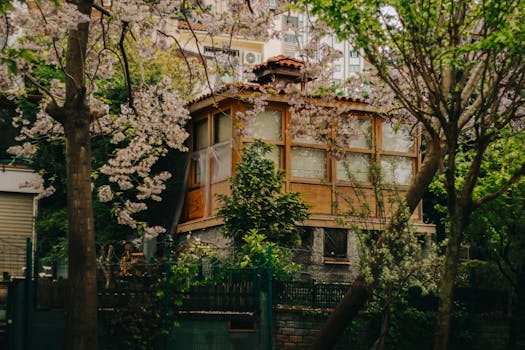
Urban Green Spaces: The Future of Outdoor Living in European Cities by 2025
Urban Green Spaces: The Future of Outdoor Living in European Cities by 2025 is a concept that has gained significant attention in recent years. As the world becomes increasingly urbanized, the need for green spaces in cities has become more pressing. These spaces not only provide a natural oasis for residents but also play a crucial role in mitigating the effects of climate change, improving air quality, and promoting biodiversity.
Introduction to Urban Green Spaces
Urban green spaces refer to areas in cities that are dedicated to nature, such as parks, gardens, green roofs, and urban forests. These spaces can be found in various forms and sizes, from small community gardens to large national parks. They provide a range of benefits, including recreation, relaxation, and environmental improvement.
European cities have been at the forefront of incorporating urban green spaces into their urban planning. Cities like Stockholm, Copenhagen, and Amsterdam have implemented innovative green infrastructure solutions, such as green roofs, urban forests, and green corridors, to create sustainable and livable environments.
Benefits of Urban Green Spaces
The benefits of urban green spaces are numerous and well-documented. Some of the most significant advantages include:
- Improved Air Quality: Urban green spaces can help reduce air pollution by absorbing pollutants and producing oxygen.
- Climate Change Mitigation: Green spaces can help mitigate the urban heat island effect, which occurs when built-up areas absorb and retain heat, making cities warmer than surrounding rural areas.
- Promoting Biodiversity: Urban green spaces can provide habitats for urban wildlife, such as birds, bees, and butterflies, and help maintain ecosystem services.
- Recreation and Relaxation: Green spaces offer residents a place to relax, exercise, and socialize, improving mental and physical health.
Case Studies: Successful Urban Green Space Initiatives in European Cities
Several European cities have implemented successful urban green space initiatives, which can serve as models for other cities. Some notable examples include:
- Stockholm’s Green Corridors: Stockholm has created a network of green corridors, which connect the city’s parks and green spaces, providing habitats for urban wildlife and promoting biodiversity.
- Copenhagen’s Green Roofs: Copenhagen has implemented a green roof policy, requiring all new buildings to have green roofs, which helps to reduce stormwater runoff and improve air quality.
- Amsterdam’s Urban Forests: Amsterdam has created urban forests, which provide shade, improve air quality, and promote biodiversity.
Challenges and Opportunities for Urban Green Spaces in European Cities
Despite the many benefits of urban green spaces, there are also challenges and opportunities that need to be addressed. Some of the key challenges include:
- Space Constraints: Many European cities face space constraints, making it difficult to create new green spaces.
- Funding: Creating and maintaining urban green spaces requires significant funding, which can be a challenge for cities with limited budgets.
- Community Engagement: Engaging local communities in the planning and maintenance of urban green spaces is crucial for their success.
However, there are also opportunities for innovation and creativity in urban green space design and implementation. Some of the key opportunities include:
- Green Infrastructure: Incorporating green infrastructure, such as green roofs and walls, into building design can help to reduce stormwater runoff and improve air quality.
- Community-Led Initiatives: Community-led initiatives, such as community gardens and urban agriculture projects, can help to promote community engagement and social cohesion.
- Technology and Innovation: Using technology and innovation, such as smart city solutions and green space management software, can help to improve the efficiency and effectiveness of urban green space management.
Conclusion
In conclusion, urban green spaces are a vital component of sustainable and livable European cities. By incorporating green spaces into urban planning, cities can improve air quality, mitigate climate change, promote biodiversity, and provide recreation and relaxation opportunities for residents. As we look to the future, it is essential that cities prioritize the creation and maintenance of urban green spaces, using innovative and creative solutions to address the challenges and opportunities that arise.






